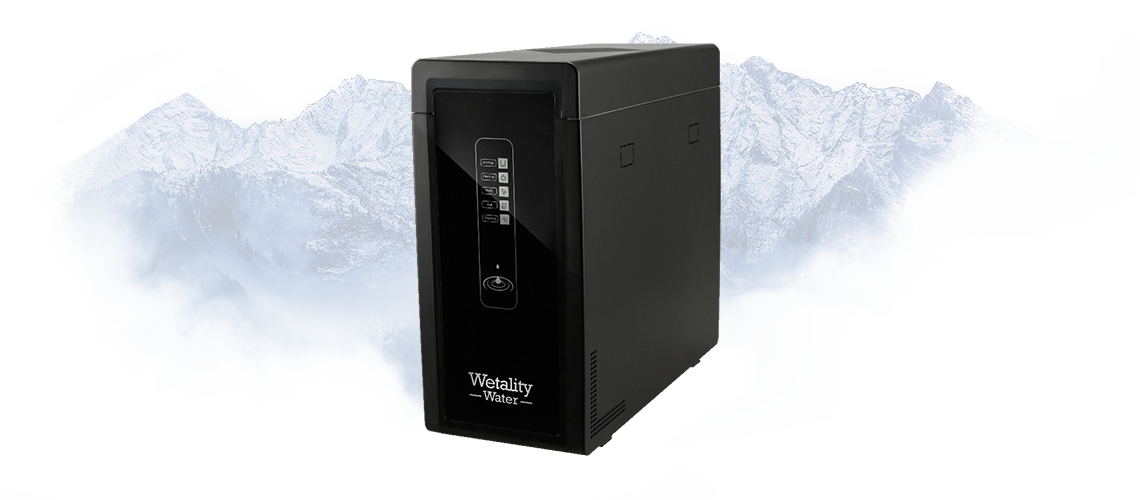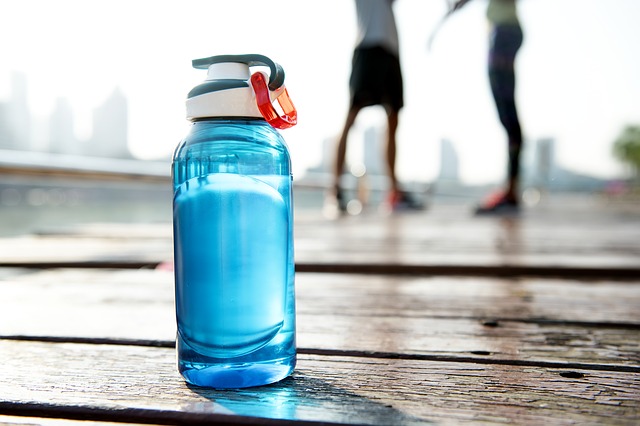Water is
the essence for all life,
opportunity starts with
safe water
Wetality challenge
On this page, you will be able to read and learn more about drinking water from a public supply, potential hazards and different ways to treat such water for purification purposes.

The water we drink
Most of us take our drinking water for granted, but maybe we should think twice.
The water in Europe
Recent tests have shown that drinking water can contain a lot more unknown chemicals than we had expected.
But instead of going all-in on eliminating health hazards at their source, the authorities tend to just raise acceptable contamination limits and sweep the problem under the rug.
Is our tap water clean enough?
We can proudly say that the water in Europe belongs to the better examples if global water quality is taken into consideration.
Most European countries do not suffer from lack of drinking water and water safety is high enough that most of us drink our water straight from the public water supply. But although it is wonderful that most of the time our water does not taste or smell bad, this does not necessarily mean it is free of contaminants.
Microbial and organic pollutants cannot always be detected by human senses.
Take Denmark for example - one of the European most developed countries with high ecological standards, you would expect.
But since the year 2000, there is ever-increasing evidence of a number of harmful substances in both groundwater and drinking water.
Focus is mainly on pesticides and fertilizers from agriculture, although there have also been cases where Danes had to boil their water to avoid bacterial poisoning.
Most of us take our drinking water for granted. Geographically, we are lucky enough. People in Europe have good access to high-quality drinking water. However, emerging reports have been showing that we are still facing many challenges regarding public supply water safety.
We love our water and cannot imagine a single day without it.
Yet, we rarely stop to think it can be one of the main factors affecting our health.
In general, we cannot detect hazards in our water by ourselves, at least not before we start feeling the consequences.
In good scenarios, it will just be odor or taste which shows that tap water is not of the best quality.
In more rare cases, people in the community start to get sick.
Furthermore, the consequences are not always felt immediately.
They can have delayed, accumulated effect.

It might be true that western societies have mostly managed to leave bacterial, viral and parasite water poisonings in the past, but new toxins are emerging each year.
Endocrine disruptors, pharmaceuticals, agricultural pollution and microplastics are just some of the challenges which public water supply systems have not been able to deal with.
Let's look at some of these issues more closely. European Environmental Agency states that pesticide pollution in drinking water has been identified as a problem in Belgium, Denmark, France, Germany, the Netherlands and in the UK.
Although the wide use of herbicides was banned in 96, the effects of their use over almost 4 decades are found in our water today. Furthermore, new substances are constantly appearing after some become illegal.
Another problem worth mentioning is pharmaceutical and microplastic water pollution. It is a challenge of the modern world which will probably continue to contaminate our planet for years to come. A great deal of all these elements ends up in our water sources.
There is also a risk factor most of us are not even aware of - high temperatures tend to impair water quality by releasing contaminants such as metal from pipes and fittings into drinking water. Hot European summers make recommended 12 C unattainable tap water temperature.
If we add on top of that also recent examples of chlorine, nitrogen, nitrate and E.coli -- which has even forced Danes into boiling their water, it becomes clear that it is also up to ourselves to take care of the safety of the water our family uses.
EU authorities are currently discussing measures for facing these challenges. Greater transparency and consumer access to information on the drinking water quality have been set as the main goals of future legislation.
But until lasting solutions are found it will be hard to restore consumer confidence in tap water.
All information provided on this page based on facts gathered from official sources. We invite you to follow the links we have attached to each statement, as well as links you can find at the bottom of this page, where you will be able to find more detailed explanations of the subject matter.
It is true that public agencies do monitor drinking water quality and set standards for known contaminants. But at Wetality we believe that, when it comes to the safety of something that our families use and consume each day, there is no acceptable level of hazards.
Drinking water should be as clean and pure as possible. And with the Wetality water system, it is possible!
pH -What is it really about?
It is well known that we should focus on our diet and nutrition in order to boost or maintain our health. In that connection, acid base diet and basic food have gained their popularity. It is said that good acid base balance in the body is very important in order for our body to "function" as well as possible and to be in balance.
pH is a measure of how acidic/basic a substance (water) is. The range goes from 0 to 14, with 7 being neutral. Less than 7 indicates acidity and pH greater than 7 indicates a base. And it is widely believed that it benefits our health if the pH level is more basic than acidic.
All organs of the body have their own pH according to their specific function. The pH of the stomach, for example, is very acidic - and is usually between 2 and 5 - because the hydrochloric acid in the stomach helps to break down the food.
pH values are an essential part of the acid base diet - pH levels in the body are constantly influenced by the food and drink we consume. This could just as well be considered a lifestyle about eating balanced amounts of acidic foods and basic foods.
If the body's pH is generally too acidic, then it will work to compensate by releasing some of its basic minerals. Too much acid is linked to various disorders and this is one of the ways how our diet influences our health.
In fact, it is believed that our diet should consist of ¼ acid-forming foods and ¾ basic foods.
Foods and drinks are basic or acidic to varying degrees.
Examples of basic foods: olive oil, grapes, melons, blueberries, sweet potato, carrots, cucumbers, raw spinach, apples, tomatoes, oranges, almonds, cherries, tea, goat milk and cheese, avocado, green salad.
Examples of acidic foods: sugar, peanuts, walnuts, chocolate, potatoes, white rice, wheat, pasta, flour, meat, homogenized milk, soft drinks, beer, and other alcohol.
Obviously, the above lists do not contain all kinds of acidic and basic foods or drinks that exist. But they do contain some very typical foods that we consume - and which you should know about if you want to eat after an acid base diet.
And this is where water steps in. It is the most important substance in our diet and the one we could not go without for even one single day. But we rarely stop to think about how it is influencing our overall health.
We drink a lot of water every single day, but also consume it through the foods and other drinks we love. The pH value in tap water is often around 7. Basic water, however, has a higher pH (often around 8-10), and it can help your body's pH level.
Even if you find it hard to follow the acid base diet in everyday life, perhaps the easiest way to boost the basic levels at least a bit is through the water you use. You could neutralize the acid from other foods and drinks you consume without sacrificing your favorite meals.
Alkaline or ionized water obtained through the Wetality water cleaning system increases both the pH of the water and the amount of antioxidants in the water.
To read more about how it works and learn some useful tips when using it for this purpose, please check Useful tips and info page.
Our advice to succeed with basic pH levels:
- - Stick to fresh green vegetables, healthy nuts, and oils
- - Take your omega-3 fatty acid daily
- - Avoid dairy products and meats
- - Avoid chocolate, alcohol, tobacco, and sweets
- - Don't overcook your foods because it drains them for vitamins and minerals
- - Drink at least 2 liters of water per day, preferably alkaline water
